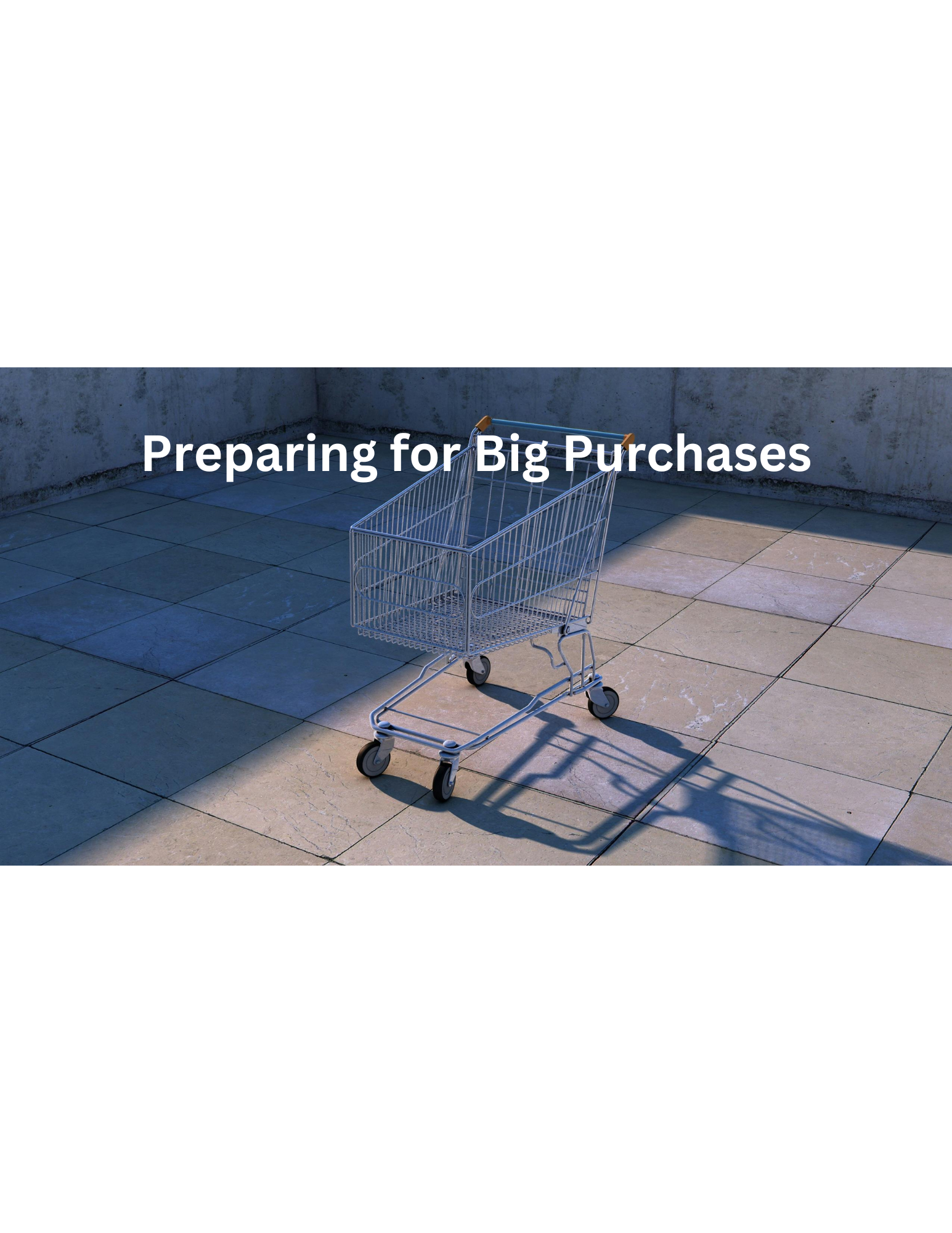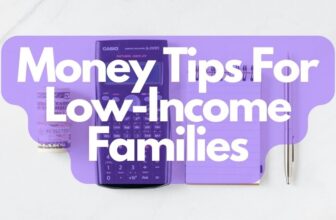
Making a big purchase, whether it’s a new car, a house, or a dream vacation, can be both thrilling and intimidating. The key to transforming this potentially daunting task into an exciting and manageable one is proper preparation and financial planning. This guide will explore practical strategies to help you prepare for major purchases, ensuring you make informed decisions and avoid unnecessary financial stress. Let’s embark on this journey of savvy spending and financial foresight!
Read also: How to Save Money on Your Home Insurance
The Importance of Preparation
Preparation is crucial when making a significant purchase. It can have a lasting impact on your financial health, so planning ahead helps you avoid impulsive decisions, get the best value for your money, minimize the impact on your overall financial goals, and reduce the risk of debt and financial stress. Essentially, preparation is your best friend when it comes to making smart financial decisions.
Step 1: Assess Your Current Financial Situation
The first step in preparing for a big purchase is to get a clear picture of your current financial landscape. Think of this as a financial health check-up. Here’s how to do it:
- Calculate Your Income: Sum up all your income sources, including your salary, freelance work, investments, and any other earnings. This gives you a starting point for understanding what you can afford.
- Track Your Expenses: Monitor your spending habits for a month. Categorize your expenses into fixed costs (like rent and utilities) and variable costs (like groceries and entertainment). This helps you identify where your money is going and where you might cut back.
- Review Your Debts: List all your debts, including credit card balances, student loans, and mortgages. Note the interest rates and minimum monthly payments for each debt. This will help you prioritize which debts to tackle first.
- Evaluate Your Savings: Take stock of your savings accounts, including emergency funds, retirement accounts, and other savings. This gives you an idea of how much you can allocate towards your big purchase.
By understanding your financial situation, you can determine how much you can afford to spend and identify areas where you may need to make adjustments.
Step 2: Set a Realistic Budget
Once you have a clear picture of your finances, the next step is to set a realistic budget for your big purchase. Here’s how to create an effective budget:
- Determine Your Maximum Spending Limit: Based on your income, expenses, and savings, decide how much you can afford to spend without compromising your financial stability. Be honest with yourself about what you can truly afford.
- Include All Costs: Consider all associated costs, not just the initial price. For instance, if you’re buying a car, factor in insurance, maintenance, and fuel costs. If you’re buying a house, include property taxes, insurance, and maintenance.
- Prioritize Your Needs: Focus on what you truly need versus what you want. This helps prevent overspending on non-essential items.
- Allocate Savings: Set aside a portion of your income each month to save for the purchase. This helps you reach your goal without disrupting your financial stability.
Creating a budget ensures you have a clear financial plan and helps you avoid spending more than you can afford.

Step 3: Save for the Purchase
Saving for a big purchase requires discipline and commitment. Here are some strategies to help you save effectively:
- Open a Dedicated Savings Account: Consider opening a separate savings account specifically for your big purchase. This helps you keep track of your progress and prevents you from dipping into the funds for other expenses.
- Automate Your Savings: Set up automatic transfers from your checking account to your dedicated savings account. This ensures you consistently save a portion of your income without having to think about it.
- Cut Unnecessary Expenses: Review your budget and identify areas where you can cut back on non-essential spending. Redirect these savings towards your big purchase fund.
- Increase Your Income: Look for opportunities to boost your income, such as taking on freelance work, a part-time job, or selling unused items. Use the extra income to accelerate your savings.
Consistent saving is key to reaching your financial goal and being prepared for your big purchase.
Step 4: Research and Compare Options
Research is a crucial step in preparing for a big purchase. By gathering information and comparing options, you can make an informed decision and get the best value for your money. Here’s how to conduct effective research:
- Identify Your Options: List all the possible options for your big purchase. For example, if you’re buying a car, research different makes and models. If you’re buying a house, explore various neighborhoods and property types.
- Compare Prices: Use price comparison websites and tools to compare prices from different sellers. This helps you identify the best deals and avoid overpaying.
- Read Reviews: Look for reviews and ratings from other buyers to gauge the quality and performance of the options you’re considering. Customer feedback can provide valuable insights and help you avoid potential pitfalls.
- Consult Experts: Seek advice from experts in the field, such as real estate agents, financial advisors, or car dealers. They can provide valuable insights and help you make an informed decision.
Thorough research ensures you’re well-informed and confident in your choice, reducing the risk of buyer’s remorse.
Step 5: Consider Financing Options
Depending on the size of your purchase, you may need to consider financing options. Here’s how to evaluate and choose the best financing option for your needs:
- Evaluate Your Credit Score: Your credit score plays a significant role in determining the interest rates and terms of your financing. Check your credit score and take steps to improve it if necessary.
- Compare Loan Offers: Shop around for loan offers from different lenders, including banks, credit unions, and online lenders. Compare interest rates, terms, and fees to find the best deal.
- Understand the Terms: Carefully read and understand the terms of the loan, including the interest rate, repayment period, and any fees or penalties. Make sure the monthly payments fit within your budget.
- Consider Down Payments: A larger down payment can reduce the amount you need to finance and lower your monthly payments. Aim to save for a substantial down payment to minimize your debt.
Choosing the right financing option ensures you can afford your purchase without compromising your financial stability.
Step 6: Plan for Future Expenses
Big purchases often come with ongoing expenses that need to be factored into your budget. Here’s how to plan for future costs:
- Maintenance and Repairs: Consider the cost of maintaining and repairing your purchase. For example, if you’re buying a car, factor in regular maintenance, repairs, and potential upgrades.
- Insurance: Ensure you have adequate insurance coverage for your purchase. Research different insurance options and choose a policy that provides the best coverage at a reasonable cost.
- Utilities and Upkeep: If you’re buying a house, consider the cost of utilities, property taxes, and ongoing upkeep. Create a separate budget for these expenses to ensure you can manage them comfortably.
- Emergency Fund: Set aside an emergency fund to cover unexpected expenses related to your purchase. This will help you avoid financial stress in case of unforeseen issues.
Planning for future expenses ensures you can manage the ongoing costs of your purchase without disrupting your financial stability.

Step 7: Make the Purchase
Once you’ve completed the preparation steps, you’re ready to make the purchase. Here are some tips to ensure a smooth transaction:
- Stick to Your Budget: Stay within your budget and avoid the temptation to overspend. Remember the financial goals you’ve set and the effort you’ve put into saving.
- Negotiate: Don’t be afraid to negotiate the price and terms of the purchase. Whether you’re buying a car, house, or other big-ticket item, negotiating can help you get a better deal.
- Review the Contract: Carefully review all the terms and conditions of the contract before signing. Ensure you understand all the details and ask questions if anything is unclear.
- Keep Records: Maintain records of all documents related to the purchase, including receipts, contracts, and warranties. This will help you manage any future issues and keep track of your expenses.
Making a well-informed and carefully planned purchase ensures you’re satisfied with your decision and can enjoy your new acquisition without financial worries.
Conclusion
Preparing for a big purchase requires careful planning, disciplined saving, and thorough research. By assessing your financial situation, setting a realistic budget, saving diligently, researching options, considering financing, planning for future expenses, and making a well-informed purchase, you can achieve your financial goals and enjoy the satisfaction of making a significant investment. With the right strategies and mindset, you can make smart financial decisions that support your long-term financial stability and success.
And remember, while it’s essential to be prudent, don’t forget to enjoy the journey! Making a big purchase is a significant milestone and should be a rewarding experience. With these strategies, you’re well on your way to making your big purchase a smart and enjoyable endeavor.






